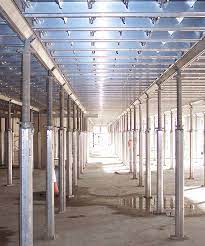Greenhouses have become an important aspect of modern commercial agriculture as they allow farmers to grow a wide variety of crops throughout the year regardless of outdoor climate conditions. By controlling factors like temperature, light, irrigation and fertilization, greenhouses have enabled farmers to maximize crop yields.
Types of Commercial Greenhouses
There are different types of greenhouses designed for commercial agricultural use:
Freestanding Greenhouses
These are standalone greenhouses made of frameworks covered with transparent material like glass or polycarbonate sheeting. They provide the basic greenhouse functionality and are affordable option for small-scale farmers.
Gutter-Connected Greenhouses
Multiple freestanding greenhouses can be connected together using gutters, thereby increasing the total cultivation area. Water and nutrients can also be shared between the connected houses.
Venlo-Style Greenhouses
Named after the Dutch city of Venlo, these large span-beam style commercial greenhouse use rigid structural framing and rely on ventilation systems for temperature control. They are suitable for large-scale farming operations.
High-Tech Greenhouses
Advanced greenhouse technologies integrated sensors, HVAC systems, lighting, irrigation and other automation for precise climate and crop management. They allow maximum control over growing conditions.
Functions of Commercial Greenhouses
The key functions that greenhouses serve for commercial crop production include:
Temperature Regulation
Greenhouses trap solar heat inside and maintain warmer temperatures even during winter months, allowing year-round cultivation. Cooling systems also control excessive warmth.
Light Amplification
The transparent walls of greenhouses maximize the amount of natural light available for plant growth. Supplementary lighting can extend photoperiods.
Humidity Control
Venting, foggers, and dehumidifiers maintain optimal humidity levels suitable for different crops to prevent diseases and promote growth.
Pest and Disease Protection
Greenhouses offer a protected indoor environment isolated from outdoor pests and pathogens prevalent in open fields.
Nutrient Delivery
Controlled irrigation and fertigation systems precisely deliver water and fertilizers according to each crop’s requirements.
Pollination Assistance
Some greenhouse crops require pollination assistance which is provided through techniques like artificial pollination.
Benefits of Commercial Greenhouse Farming
The key benefits provided by commercial greenhouses include:
Year-Round Production
Greenhouses allow farmers to plan successive harvests of the same or different crops throughout the year instead of being limited by seasonal changes alone.
Higher Yields
Optimized growing conditions maximize crop yields per unit area compared to open field farming. Yield increases in the range of 30-150% are common with greenhouse cultivation.
Protection from Weather Extremes
Greenhouse crops are sheltered from adverse effects of weather like excess rain, wind, frost or drought which damage open field crops.
Superior Quality Produce
Controlled greenhouse environment results in produce of uniform size, color and quality preferred by consumers and fetch better prices.
Less Chance of Crop Failure
Reliable protection from weather ensures consistent harvests even during climatic aberrations protecting farmers from production failures and financial losses.
Less Use of Pesticides
Integrated pest management in greenhouses minimizes chemical pesticide usage while increasing dependability and safety of produce.
Employment Opportunities
Modern greenhouse farming requires skilled labor for technical crop management tasks providing jobs in rural agricultural communities.
Fresh Local Produce
Greenhouses promote year-round locally grown produce, address seasonal shortage issues and reduce dependence on imports.
Economically viable option
For many small and medium farmers, greenhouse cultivation provides an accessible and economically viable option to participate in commercial agriculture despite limitations of land holdings.
*Note:
- Source: Coherent Insights, Public sources, Desk research
- We have leveraged AI tools to mine information and compile it




